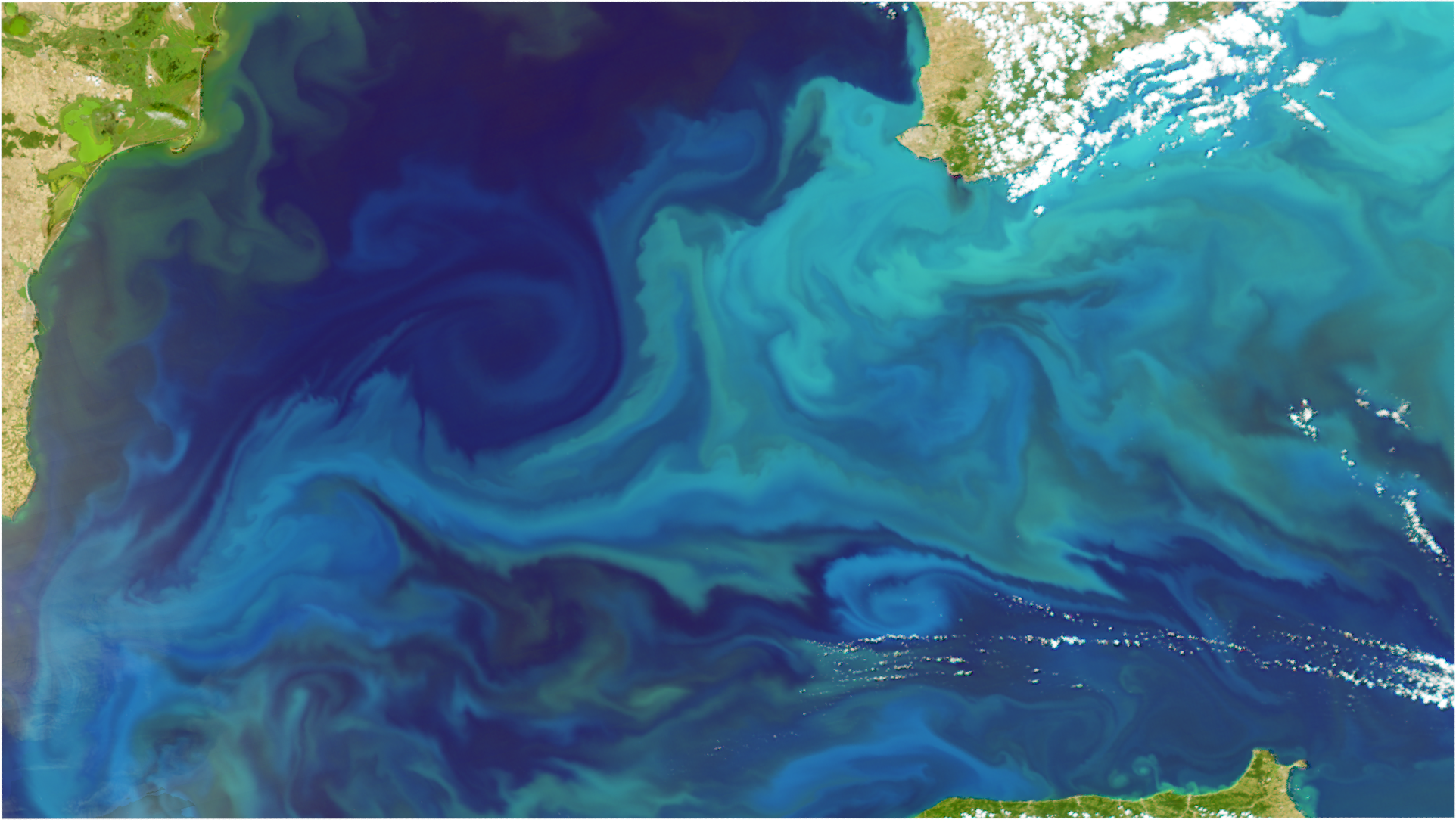Ocean Color Image Gallery
Black Sea |
|
The Black Sea is the largest inland body of water and is also the largest meromictic basin, which means the movement of water between the lower and upper layers of the Sea is rare. This creates considerable temperature and nutrient differences between these layers, with the lower layers being absolutely free of oxygen and anoxic. This complex water chemistry is fueled by extensive freshwater inputs from multiple large rivers and rainfall, with salt water exchanges with the Aegean Sea only through the Bosphorus and Dardanelles Strait.
In 2010, scientists discovered a current of saline water flowing from the Mediterranean Sea/Aegean Sea, through the Bosphorus Strait, and along the seabed of the Black Sea. This dense saline inflow from the Mediterranean happens at the bottom of the basin, while the outflow of fresher Black Sea surface water takes place near the surface of the basin resulting in very low/slow mixing between the two layers in the Black Sea. Because these straights are very slow flowing, it takes an estimated 2,500 years for the water in the Black Sea to be fully recycled.
This poor mixing causes only the oxygen-rich surface waters of the Black Sea to support complex marine life in contrast to vast anoxic zones, which are considered biologically dead with life only at the microscopic bacterial scale. Large turquoise swirls of phytoplankton blooms are commonly present and indicate an extremely unique and delicate ecosystem dependent on salinity (amount of salt), water levels, and amount of nutrients. Human activity has affected all of these factors over the last several decades, including man-made pollution, over-harvesting for fisheries, increased nutrient loading, and water utilization practicies.
|




